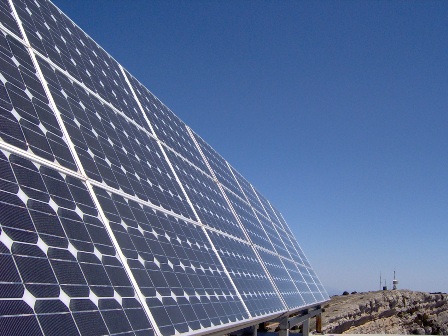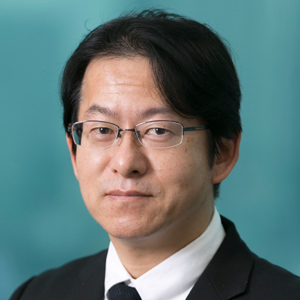Two years after the earthquake and tsunami of March 11, 2011, precipitated a disastrous accident at the Fukushima Daiichi Nuclear Power Station, the image of smoke rising from the roof of the facility’s reactor buildings following a series of hydrogen explosions remains seared in the nation’s collective memory. The challenges to a viable post-Fukushima energy policy are formidable. But political inertia and inaction are not an option.
Japan Energy Policy in the Post-Fukushima Era
In the aftermath of the accident, then Prime Minister Naoto Kan announced that Japan would have to “rebuild its energy policy from scratch.” Kan scrapped the government’s plans to boost the share of nuclear power in Japan’s electricity supply to 50% by 2030, and his successor, Yoshihiko Noda, pledged to reduce nuclear dependence to zero by the 2030s—a position incorporated in the 2012 election manifesto of the Democratic Party of Japan.
However, the December general election was a referendum on the DPJ’s ability to govern, not its nuclear energy policy, and the result was a crushing defeat for the DPJ.
The policy agreement reached between the victorious LDP and its coalition partner the New Komeito eschews specifics when it comes to energy, but it does calls for a “multifaceted” energy policy that would gradually reduce dependence on nuclear power while boosting the share occupied by renewable energy. Under item 4, “Nuclear and Energy Policy,” the document explains the coalition policy as follows.
We will follow the judgment of the Nuclear Regulation Authority, which places top priority on public safety in accordance with international standards, in determining whether operations can be resumed at individual nuclear power plants. At the same time, we will reduce reliance on nuclear energy as much as possible through such policies as accelerated conversion to renewable energy and energy-efficient fossil-fuel power generation.
While the public debate over the future role of nuclear power continues, it is fair to say that, since the nuclear accident of March 2011, Japan’s energy policy has moved in the direction of increased diversity and dwindling reliance on nuclear power.
Renewable Energy—Thinking Outside the Grid
The new climate of public opinion has intensified the general focus on renewable energy as an important component of Japan’s future energy mix.

Japan has long been characterized as a nation poor in energy resources, but reports issued by the Ministry of the Environment and other agencies since the Fukushima accident have highlighted Japan’s rich potential in the area of renewable energy and stressed that the cost differential between such energy sources on the one hand and conventional thermoelectric power plants and nuclear reactors on the other is rapidly shrinking.
The biggest hurdles to more widespread use of renewable energy are the difficulty of providing a steady supply of solar- and wind-produced electricity, which fluctuate depending on weather conditions, and the challenge of transmitting power from areas suited to power generation to major centers of consumption. Surmounting these hurdles will require a flexible approach that challenges the traditional assumptions of Japan’s electric power sector.
For example, the fragmented quality of Japan’s power grid is often cited as an obstacle to the kind of interregional flow of electric power needed for widespread deployment of wind power, solar power, and other forms of renewable energy. But the capacity of Japan’s connecting lines is far greater than most people realize.
In the European Union, where power flows freely across national borders, cross-border interconnection capacity is 51% of installed generation capacity in Denmark, 36% in Germany, 27% in Portugal, 9.4% in Spain, and around 5% in Ireland.
Japan’s cross-regional interconnection capacity also varies by region, but it amounts to a full 128% of installed generation capacity in the Chugoku district, 70% in Kansai, 67% in Hokuriku, and 28% in Tohoku. Tokyo area’s interconnections amount to only 9% of installed generation, and Hokkaido’s only 6%. However, these figures indicate that western Japan, at least, is quite adequately equipped for interregional movement of electric power.
The main problem is that regulations restrict the use of Japan’s connecting lines. By opening up these lines, we should be able to solve many of the transmission issues accompanying the use of renewable energy.
When it comes to mitigating power fluctuations from renewable energy sources, Spain offers an example worthy of emulation. It has broken up the electric power industry into generation and transmission sectors and concentrated the authority and technical capacity to monitor and control fluctuations on the transmission side. In this way Spain has succeeded in ensuring reliable energy supplies despite its high reliance on renewable energy without resorting to costly energy-storage facilities. (See “Getting Serious About New Energy: Lessons from Spain” https://www.tkfd.or.jp/en/research/detail.php?id=555 )
To hasten the widespread deployment of renewable energy, Japanese policymakers will need to challenge deep-rooted assumptions and adopt a more flexible approach to electric power generation and supply.
Natural Gas—A Test of Resource Diplomacy
As of March 2013, all but 2 of Japan’s 50 nuclear reactors remain shut down. Under these circumstances, Japan has no choice in the short term but to compensate by increasing the output of electricity from fossil-fuel-burning plants. Because of its cost and environmental advantages over other fossil fuels, liquefied natural gas is the best choice to offset the loss of nuclear power.
That said, the price Japan pays for its natural gas imports is very high by international standards, and many here are concerned that expanding those imports will lead to sharp increases in energy costs. As of this writing, Japan pays about $17 per million BTU for natural gas on the spot market, while the price in North America is only about $2, thanks in large part to the advent of shale gas.
According Ministry of Finance trade statistics, Japan imported 87.3 million tons of LNG in 2012, about 25% more than in 2010, before the Fukushima disaster. If we continue to import natural gas at such high prices, electricity rates will surge, hurting businesses and consumers alike. For this reason, securing reliable and cheap supplies of natural gas should a top priority for Japanese energy policymakers.
To this end, Japan needs to diversify its natural gas supply sources. This means importing not only from our traditional suppliers in Southeast Asia (Indonesia and Malaysia) and the Middle East (Qatar) but also from North America, where the shale gas revolution is driving down the price of natural gas, and the Russian island of Sakhalin, whose vast reserves are within relatively easy reach.
The shale gas revolution and the resulting oversupply have altered the pricing of natural gas globally, giving rise to what some have termed a buyers’ market. As one of the world’s top importers of natural gas, Japan should have considerable leverage when it comes to negotiating advantageous procurement contracts.
At the same time, with Japan’s nuclear reactors shut down, gas-exporting countries could attempt to take advantage of the nation’s energy pinch. The situation is putting Japan’s resource diplomacy to the test.
Last May the Tokyo Foundation offered several concrete recommendations for resource diplomacy as part of our policy document “Rebuilding Japan’s Energy Policy.” ( https://www.tkfd.or.jp/en/research/detail.php?id=474 ) As one of our proposals for securing reliable and cheap supplies of natural gas, the document called on the government to revisit the idea of a Sakhalin-Japan gas pipeline.
In October last year, we recommended that Japan leverage its technological know-how for tapping methane hydrate deposits as a bargaining chip in resource negotiations. ( http://www.tkfd.or.jp/research/project/news.php?id=1039 , Japanese only)
Just as deployment of renewable energy demands a flexible and resourceful approach, so it is with the even more urgent task of securing reliable, cheap supplies of natural gas. We will need to “think outside the box” and explore all possible options to meet the energy challenges facing Japan.
Nuclear Energy—Resolving Safety and Disposal Issues
Given Japan’s limited energy options today, our policymakers must think long and hard before eliminating any of the available options.
As we have seen, resource diplomacy is likely to play a critical role in supplying Japan’s energy needs, and to enter into negotiations from a position of strength, we need a variety of backup plans. From this standpoint, it would be strategically misguided to eliminate the option that has played such a central role in Japan’s energy policy until recently, namely, nuclear power.
In the future, I am hopeful that nuclear power will play a part not only as a bargaining chip but also as a practical source of electric power. But it cannot assume its former role as the mainstay of Japan’s energy mix until we have resolved the safety problems and other issues that the Fukushima accident has highlighted.
At the top of the agenda is the need to evaluate the safety of all existing nuclear power facilities, including their proximity to active faults.
On March 18, 2013, a panel of the Cabinet Office’s Central Disaster Prevention Council submitted its predictions regarding economic damage from a megaquake occurring in the Nankai Trough off Japan’s Pacific coast south of Honshu and Shikoku. The panel estimated that a magnitude 9.1 quake and the ensuing tsunami would cause damage amounting to about 220 trillion. Yet the estimate did not include the impact of a quake-induced nuclear disaster. The government needs to order a rigorous study on the probable impact of a Nankai Trough earthquake on the region’s nuclear reactors.
The government must also come up with an answer to the problems surrounding nuclear waste reprocessing and disposal—the so-called back end of the nuclear fuel cycle. Nuclear energy is not simply the process of generating electric power from nuclear fission. It is a complete cycle encompassing disposal of the radioactive waste produced in the process of generation. Unfortunately, the question of where and how to dispose of that waste has yet to be answered. This is a huge problem for the sustainability of nuclear power in Japan.
The nuclear accident of March 2011 has raised public awareness of these and other problems that critics of nuclear energy have been talking about for years. Given the present climate of opinion, it seems fair to say that the government will face fierce resistance if it seeks to resurrect its nuclear energy program out of short-term economic considerations alone, without first addressing these basic issues.
The Need for Political Leadership
Last December’s general election swept the DPJ from power and ushered in a new LDP-Komeito coalition government. Unfortunately, the new administration has yet to clearly present a concrete energy policy, and there are signs that it intends to wait until after the summer House of Councillors election to put forth a detailed plan.
For Japan, the only viable energy policy is one that clearly articulates the difficult challenges facing the nation in the areas of renewable energy, natural gas imports, and nuclear power and tackles these challenges head-on. To return to a pre-Fukushima status quo out of political inertia would be unforgivable. Yet even as I write this, Japanese newspapers are reporting that intense lobbying from the electric power industry and its allies in the LDP threatens to eviscerate the government’s plan to break the regional utilities’ generation-and-supply monopolies.
The government and the ruling party should take a moment to reflect on the reasons they are drafting a new energy policy to begin with and to clarify the top priorities for such a policy. With those priorities in mind, the government needs to articulate a comprehensive, detailed energy policy and present it to the people without delay or obfuscation.


